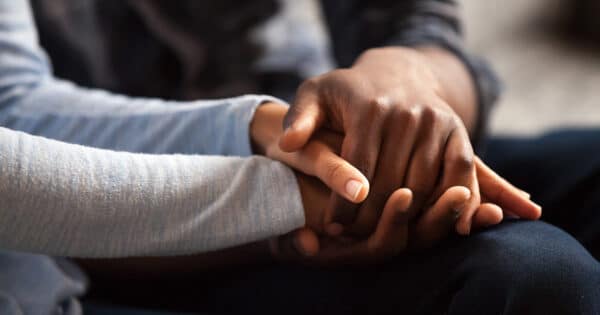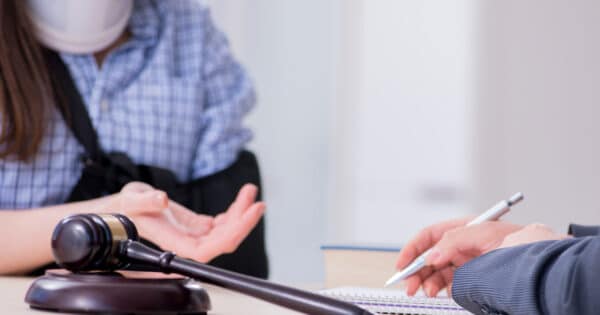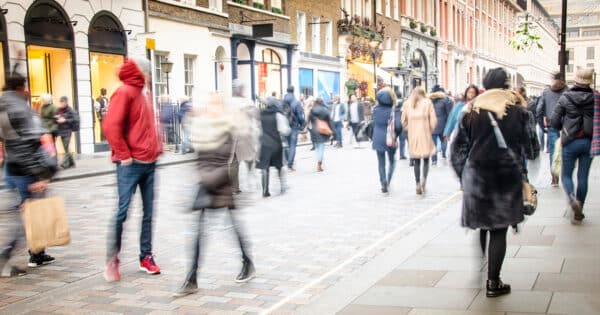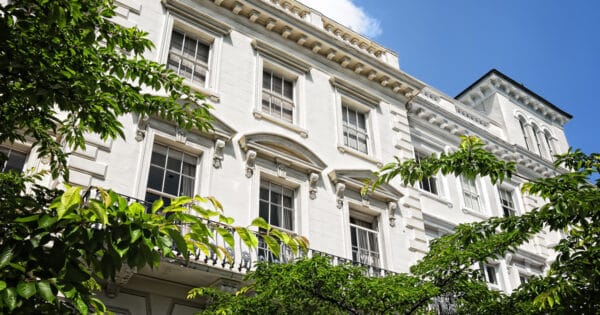What are secondary victim claims?
Secondary victim claims are brought by individuals who have witnessed death or injury (or threat of death or injury) to a loved one (the primary victim) due to negligence.
The recent three appeals before the Supreme Court concerned circumstances where the psychiatric injury was caused by witnessing the death or injury of their loved ones following a negligent failure to diagnose and treat their illnesses.
The background to these cases
In Paul and Polmear the Claimants were present when their loved ones died in shocking circumstances and in Purchase the Claimant saw her daughter a few minutes after she had collapsed.
In the case of Paul the Claimants saw their father collapse from a cardiac arrest 14 months after the alleged medical negligence. In Polmear the Defendant failed to diagnose a 6-year-old child’s pulmonary condition and she died in front of her parents around 4 months later. In Purchase the deceased’s mother developed post traumatic stress disorder after finding her daughter in a critical condition shortly before she was resuscitated and died and then played a missed call from her daughter in which she heard her daughter’s dying breaths.
The Court of Appeal heard and decided Appeals in all three cases together and referred to the earlier Court of Appeal decision in Taylor and Novo (UK) Ltd [2013] EWCA Civ 194, [2014] QB 150 to come to the conclusion that these claims could not succeed. Permission was given to the Claimants to appeal to the Supreme Court.
The key question considered by the Supreme Court was whether a doctor has a duty to close members of a patient’s family to protect them against the risk of any injury that they might suffer after witnessing death or injury of their loved one caused by that doctor’s negligence.
Analysis of the caselaw by the Supreme Court
The case law was studied in detail. The features of reported cases in which secondary victim claims had succeeded to date had been considered by Lord Oliver in the House of Lords following the Hillsborough football disaster (Alcock). He set these out as:
- There is a marital or parental relationship between the Claimant and the primary victim;
- The injury suffered results from the sudden and unexpected shock to the Claimant;
- The Claimant was either present at the scene of the accident or in the immediate vicinity and witnessed the aftermath soon afterwards;
- The injury arose from witnessing the death of, extreme danger to, or serious injury by the primary victim; and,
- There was not only physical proximity to the accident but also closeness in time between the event and the Claimant’s perception of it combined with a close relationship between the Claimant and the primary victim.
These features were revisited in Frost (where police officers present at the Hillsborough disaster tried to recover compensation for psychiatric injury) and summarised by Lord Hoffmann as:
- The Claimant must have close ties of love and affection with the victim (such ties may be presumed in some cases;
- The Claimant must have been present at the scene of the accident or its immediate aftermath; and,
- The psychiatric injury must have been caused by direct perception of the accident or its immediate aftermath and not upon hearing about it from somebody else.
The Supreme Court noted that in medical negligence cases the event (or the aftermath) witnessed by the secondary victim is not usually an accident, but it is the suffering or death of their relative from a medical illness. The Justices referred to the event as a “medical crisis”.
Various medical negligence cases were then considered by the Supreme Court including the case of North Glamorgan NHS Trust and Walters [2002] EWCA CIV 1792, [2003] PIQR P16 which is often relied upon by Claimants.
In that case the Claimant witnessed her baby son suffering an epileptic seizure due to negligence, leading to coma and brain damage. The baby died approximately 36 hours after the seizure in the Claimant’s arms. The claim succeeded because there was a “seamless tale with an obvious beginning and an equally obvious end”. The 36 hours was seen as one entire event and each of the events the Claimant saw was said to be sudden and unexpected. The Justices noted that in the medical cases considered, the Court had not decided whether, in general, the rules that had been developed in accident cases ought to be applied in medical negligence cases. The focus appeared to be on whether the Claimant had suffered psychiatric illness due to “a sudden shock” or a “sudden appreciation of a horrifying event”.
The Justices concluded that the Alcock requirements, as summarised in Frost, did not include a requirement that the Claimant’s psychiatric injury must have been caused by a sudden shock. It is sufficient for the Claimant to be present at the scene of the accident or its immediate aftermath in which a loved one has been killed, injured or put in danger. They also concluded that there was no need to consider the additional requirement that the event witnessed by the Claimant was horrifying.
The Justices considered Taylor and Novo in detail. In that case Mrs Taylor was injured at work when a stack of racking boards fell on top of her. Liability was admitted by her employer for the accident. Three weeks later she unexpectedly collapsed and died at home from a pulmonary embolus following a deep vein thrombosis. The Claimant witnessed her mother’s death. The Defendant’s sole defence was that the Claimant was not present at the scene of the accident or its immediate aftermath. The claim succeeded at trial but was reversed by the Court of Appeal, who stated there had been one accident which had been the injury caused by the falling racking boards.
The Justices agreed with the Court of Appeal that none of the three claims before them could succeed unless they also concluded that Novo was wrongly decided. The Justices said that Novo is authority that no psychiatric claim can be brought caused by a separate event removed in time from the original accident. However, they did not agree that Novo was authority for an argument about distance in time between the event which caused psychiatric injury and the original negligence.
It was then considered whether the event needed to be close in time to the negligent act or omission. The Justices saw no reason why a gap in time between the negligence and the accident should prevent a claim by a secondary victim, when it does not prevent a claim by a primary victim.
Next it was considered whether the event had to be the first manifestation of damage to the primary victim. In Novo, the collapse and death of Mrs Taylor was not the first occasion when damage was manifest. The Justices saw no good reason to introduce a test of first manifestation of damage and said it would create a new layer of factual complexity.
The Justices then considered whether damages would be recoverable in the absence of an accident. It was noted that an accident is an external event which causes or has the potential to cause injury and is not the actual injury.
The Justices agreed with the Court of Appeal in Novo that, to allow secondary victims to recover damages where the Claimant witnesses the death of illness of a loved one from disease, would give rise to unfair differences in treatment between different categories of Claimant. They considered and example whereby compensation could be recovered by a daughter who sees her parent die from a heart attack or pulmonary embolus which could have been avoided but denied to a mother who does not witness a road traffic accident in which her child was fatally injured (or its immediate aftermath) but has to identify the body afterwards in the mortuary or when her child dies a couple of days later from the injuries sustained.
Crucially, the Justices held that Walters was wrongly decided on its facts and “should not be followed”. They stated that other cases, although correctly decided, were decided on an incorrect basis. The claims ought to have been dismissed for the sole reason that the Claimant did not witness an accident or its aftermath caused by the Defendant’s negligence.
Can secondary victim claims ever apply in a medical setting?
The Supreme Court did comment on whether rules governing secondary victim claims arising from accidents could ever apply in a medical setting. Medical examples considered included where a doctor injects a patient with a wrong dose or an incorrect drug causing an acute adverse reaction witnessed by a close relative. The Supreme Court did not answer this question but stated that the issues raised by these examples could be addressed on another day, in a relevant case.
It was also noted in the Judgment “It cannot be said that a doctor who treats a patient thereby enters into a doctor-patient relationship with any member of the patient’s family and therefore assumes responsibility for their health.” The Supreme Court said, to impose a responsibility on doctors to protect members of their patient’s close family from exposure to the trauma of witnessing the death or injury of their family member goes beyond what would reasonably be regarded as the nature and scope of a doctor’s role.
There was not sufficient proximity in the relationship between the doctor and their patient’s close family to give rise to a duty of care. It was concluded that the claims for compensation made in Paul, Polmear and Purchase did not satisfy the legal requirements for the recovery of damages by secondary victims who suffer injury as a result of the death of another person. The Appeals were therefore dismissed.
Lord Burroughs, dissenting, stated that insisting on an accident would deny recovery in almost all medical negligence cases. He considered that the Court of Appeal’s decision in Novo was incorrectly decided and the relevant event in the three cases before him was the death of the primary victim, and the claims should succeed.
So, will claimants be able to bring secondary victim claims in the future in medical negligence cases? It appears that very few claimants will be able to do so, unless there is a medical accident.
To answer this, I have considered what sort of medical accidents might arise in a case. For example, when an anaesthetist intubates a patient and accidentally inserts the tube into the oesophagus instead of the trachea, leading to death or brain damage, could this be seen as an accident? Or injecting air into the vascular system, such as via a central line, causing the patient to suffer an air embolus, leading to the death of the patient? In this case, the accident may not be immediately following the breach.
There is also scope for an argument about medical accidents in the obstetric setting, for example where there is shoulder dystocia and the baby suffers Erb’s palsy due to mistakes in the delivery. I would also question whether an omission to give medication might be classed as an accident, where the secondary victim is present when the omission occurs, leading to harm to the primary victim. An example may be a paramedic omitting to give glucose to a patient who is known to be hypoglycaemic, leading to a diabetic coma.
I don’t think this will be the last of these cases to appear in the Supreme Court but it will be necessary to give appropriate advice to each potential claimant, depending on the facts of the case.







